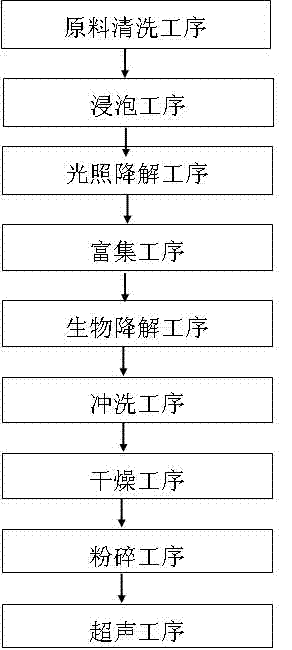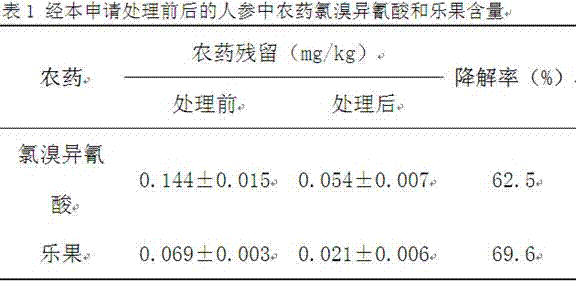A method for reducing organochlorine and organophosphorus pesticide residues in ginseng extract
An organophosphorus pesticide and ginseng extraction technology, which is applied in the field of medicine and health, can solve problems such as economic loss, harm, ginseng application and export restrictions, and achieve the effect of extremely low pesticide residues and good preservation
- Summary
- Abstract
- Description
- Claims
- Application Information
AI Technical Summary
Problems solved by technology
Method used
Image
Examples
Embodiment
[0027] Example: Extraction and content determination of residual organochlorine pesticides and organophosphorus pesticides in ginseng (taking chlorobromoisocyanuric acid and dimethoate as examples)
[0028] 1 Determination of chlorobromoisocyanuric acid: high performance liquid chromatography, c18 chromatographic column;
[0029] (1) Instrument conditions:
[0030] Mobile phase: methanol-0.01% glacial acetic acid aqueous solution (pH 4.0) [V (methanol): V (glacial acetic acid aqueous solution) = 5:95], flow rate 0.5 mL / min; column temperature 30 ℃; detection wavelength 200 nm; The injection volume is 10 μL. Under these conditions, the retention time of chlorobromoisocyanuric acid is 6.9 min;
[0031] (2) Sample extraction: Weigh 10.0 g of the pretreated sample into a 250 mL ground-neck Erlenmeyer flask, add 20 mL of distilled water, shake lightly to wet the sample, add 80 mL of acetonitrile, and shake for 1 h with a rotary oscillator ,filter. Accurately measure 50 mL of th...
PUM
 Login to View More
Login to View More Abstract
Description
Claims
Application Information
 Login to View More
Login to View More - R&D
- Intellectual Property
- Life Sciences
- Materials
- Tech Scout
- Unparalleled Data Quality
- Higher Quality Content
- 60% Fewer Hallucinations
Browse by: Latest US Patents, China's latest patents, Technical Efficacy Thesaurus, Application Domain, Technology Topic, Popular Technical Reports.
© 2025 PatSnap. All rights reserved.Legal|Privacy policy|Modern Slavery Act Transparency Statement|Sitemap|About US| Contact US: help@patsnap.com


